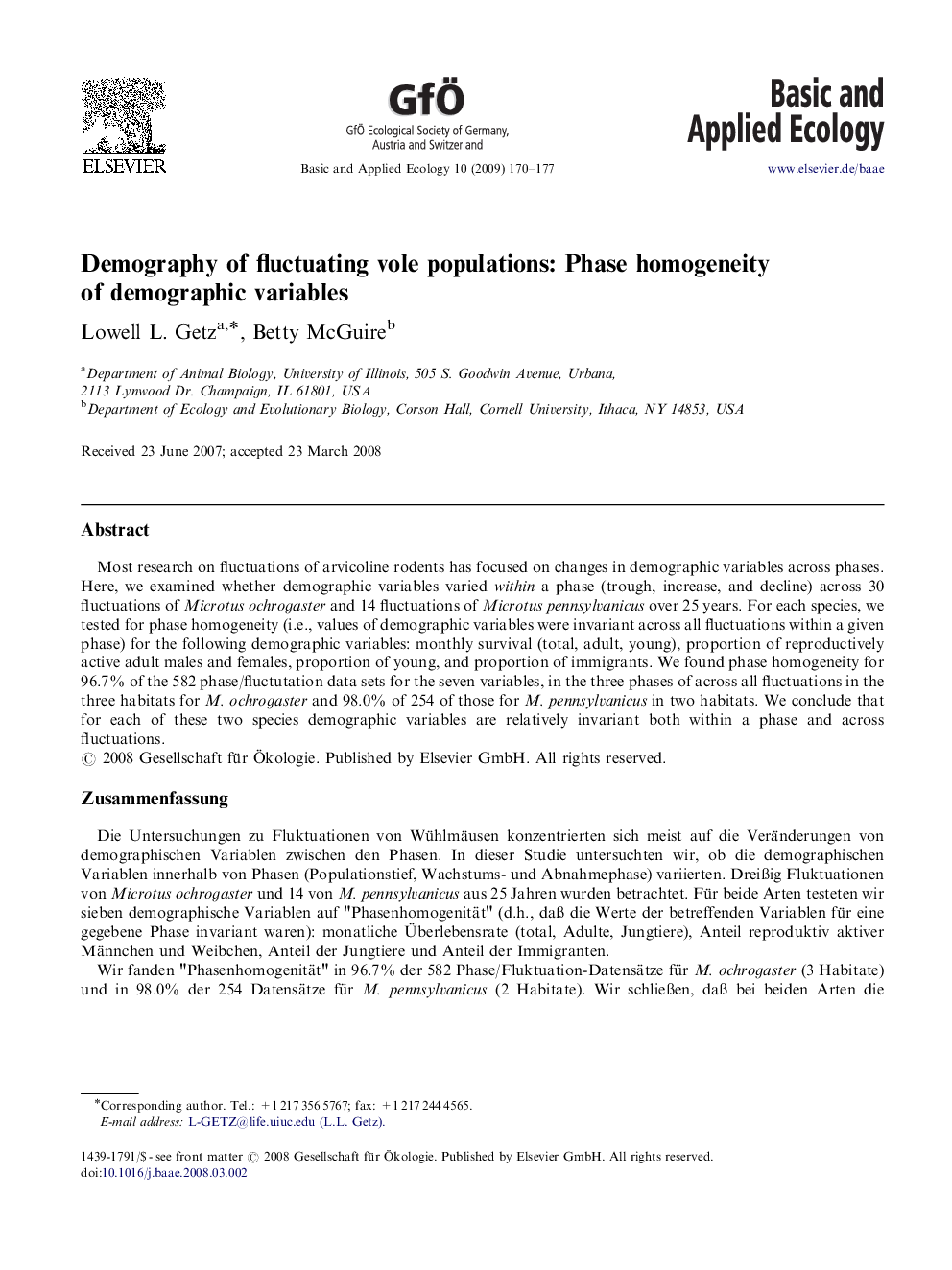| Article ID | Journal | Published Year | Pages | File Type |
|---|---|---|---|---|
| 4384585 | Basic and Applied Ecology | 2009 | 8 Pages |
Most research on fluctuations of arvicoline rodents has focused on changes in demographic variables across phases. Here, we examined whether demographic variables varied within a phase (trough, increase, and decline) across 30 fluctuations of Microtus ochrogaster and 14 fluctuations of Microtus pennsylvanicus over 25 years. For each species, we tested for phase homogeneity (i.e., values of demographic variables were invariant across all fluctuations within a given phase) for the following demographic variables: monthly survival (total, adult, young), proportion of reproductively active adult males and females, proportion of young, and proportion of immigrants. We found phase homogeneity for 96.7% of the 582 phase/fluctutation data sets for the seven variables, in the three phases of across all fluctuations in the three habitats for M. ochrogaster and 98.0% of 254 of those for M. pennsylvanicus in two habitats. We conclude that for each of these two species demographic variables are relatively invariant both within a phase and across fluctuations.
ZusammenfassungDie Untersuchungen zu Fluktuationen von Wühlmäusen konzentrierten sich meist auf die Veränderungen von demographischen Variablen zwischen den Phasen. In dieser Studie untersuchten wir, ob die demographischen Variablen innerhalb von Phasen (Populationstief, Wachstums- und Abnahmephase) variierten. Dreißig Fluktuationen von Microtus ochrogaster und 14 von M. pennsylvanicus aus 25 Jahren wurden betrachtet. Für beide Arten testeten wir sieben demographische Variablen auf "Phasenhomogenität" (d.h., daß die Werte der betreffenden Variablen für eine gegebene Phase invariant waren): monatliche Überlebensrate (total, Adulte, Jungtiere), Anteil reproduktiv aktiver Männchen und Weibchen, Anteil der Jungtiere und Anteil der Immigranten.Wir fanden "Phasenhomogenität" in 96.7% der 582 Phase/Fluktuation-Datensätze für M. ochrogaster (3 Habitate) und in 98.0% der 254 Datensätze für M. pennsylvanicus (2 Habitate). Wir schließen, daß bei beiden Arten die demographischen Variablen sowohl innerhalb einer Phase als auch über Fluktuationen hinweg relativ unveränderlich sind.
